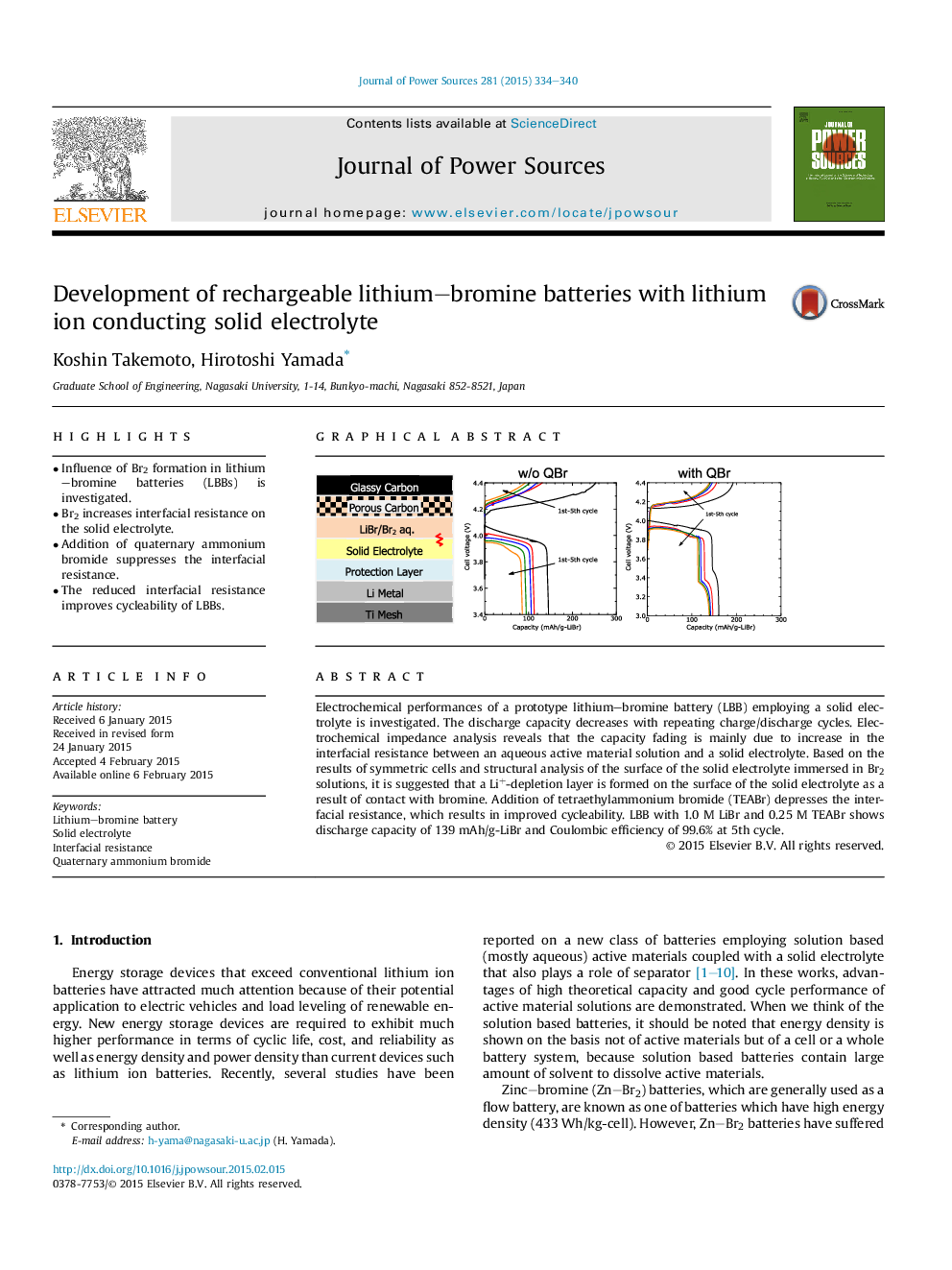| کد مقاله | کد نشریه | سال انتشار | مقاله انگلیسی | نسخه تمام متن |
|---|---|---|---|---|
| 1286297 | 1497951 | 2015 | 7 صفحه PDF | دانلود رایگان |
• Influence of Br2 formation in lithium–bromine batteries (LBBs) is investigated.
• Br2 increases interfacial resistance on the solid electrolyte.
• Addition of quaternary ammonium bromide suppresses the interfacial resistance.
• The reduced interfacial resistance improves cycleability of LBBs.
Electrochemical performances of a prototype lithium–bromine battery (LBB) employing a solid electrolyte is investigated. The discharge capacity decreases with repeating charge/discharge cycles. Electrochemical impedance analysis reveals that the capacity fading is mainly due to increase in the interfacial resistance between an aqueous active material solution and a solid electrolyte. Based on the results of symmetric cells and structural analysis of the surface of the solid electrolyte immersed in Br2 solutions, it is suggested that a Li+-depletion layer is formed on the surface of the solid electrolyte as a result of contact with bromine. Addition of tetraethylammonium bromide (TEABr) depresses the interfacial resistance, which results in improved cycleability. LBB with 1.0 M LiBr and 0.25 M TEABr shows discharge capacity of 139 mAh/g-LiBr and Coulombic efficiency of 99.6% at 5th cycle.
Figure optionsDownload as PowerPoint slide
Journal: Journal of Power Sources - Volume 281, 1 May 2015, Pages 334–340
